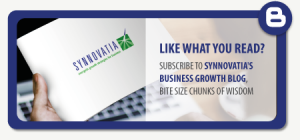It’s no secret that I’m a voracious reader. And, to avoid looking obsolete and irrelevant, most of my reading is keeping up with best practices and trends…one of which is blogging for small business.
Recently, I came across new blogging trends. Knowing what I like—and don’t like—when reading blogs, I was intrigued.
I’d be lying if I didn’t admit that my excitement was mixed with intimidation and trepidation. Not being a formally trained writer/blogger, I questioned my ability to integrate the up-to-date views.
Would you still love me tomorrow, I wondered? It was then I realized—we’re friends and you would tell me, in no uncertain terms, if the latest intelligence worked or wrecked my blog.
Why Blogging Succeeds for Small Business
More and more consumers turn to the web for information. In fact, today‚Äôs consumers are more sophisticated in their buying approach. With 329 million people reading blogs, 97% conduct research online for products and services¬Ýbefore they buy.
First of all, over 70% of buyers prefer to get to know a business through (blogs) articles rather than ads. That’s a shocker (unless you’re the consumer). Typically, 57% of a purchase decision is made before a client ever speaks to a business. That’s Why We Love Small Business Blogging.
In fact, businesses who write just 3-4 blog posts per month get 20 more monthly lead submissions, 800 more monthly site visits, 60 more Twitter followers, and 50 more Facebook Like’s than those who only write 2 blog posts per month.
What Lurks Inside the Mind of a Blog Reader
We already know that blogging is good for business.¬ÝAll the same, do we know what influences a reader to pause long enough to read your blog and take action? The latest trends reveal some intriguing insights into the mind of your readers.
Readers love blogs that include these points:
1) Headlines matter (i.e., the enticement)
- Eight out of 10 people read your headline. Two out of 10 read the rest of your blog.
- Readers absorb the first three words of the headline and the last three words. Make them count.
- Headline strategies to consider:
- Surprise
- Questions
- Curiosity
- Negatives
- How to
- Numbers/Listicles
- Audience referencing
- Use a headline formula: Number + Adjective + Keyword + Rationale + Promise
- Employ a title generator for blog titles.
- Apply a title/headline analyzer to evaluate the emotion that your headline elicits in your readers mind: intellectual, empathetic, spiritual
2) Once upon a time (i.e., the hook)
- Opening your blog with a story leads to 300% more readers.
- Use a personal anecdote or moment of transparency.
3) Less words—more pictures (i.e., the mind’s eye)
- Readers remember photos 6x easier than text.
- An image at the top right/left of a blog makes it easier to comprehend.
- Image strategies: use an average of one visual image for every 350 words.
4) Words, words, and more words (i.e., the scan ability)
- Readers read only 28% of the words in a blog post.
- Writing strategies:
- Write short paragraphs of 2-4 sentences per paragraph
- Write short sentences
- Use words/language commonly used by your readers
- Use subheader(s)
- Use lists and bullets
- Average blogs are 400-600 words; some are 1500-1600 words
5) It’s a wrap (i.e., the big finish)
- Add a call-to-action (CTA) that requires action such as “call” or “join” or “tell us what you think” or “contribute your thoughts”.
Interesting information, isn‚Äôt it? Blog readers have spoken. They‚Äôve shared their wants, needs, and desires with us. Now lets see if they‚Äôll take action. üòÄ

So, how did I do? In the true spirit of “following the rules,” contribute your thoughts below. What works—or doesn’t work—when you’re reading blogs?


